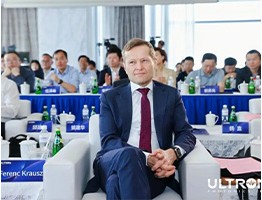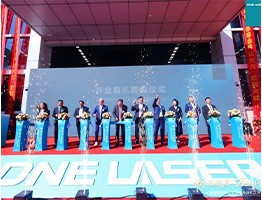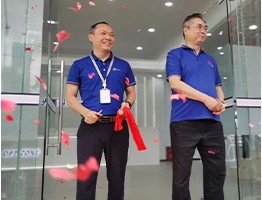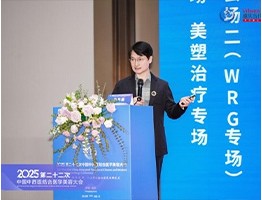Femtosecond lasers extend glass cleaving to mixed materials
source:Laser Focus World
release:Nick
keywords: Femtosecond lasers Filamentation cutting
Time:2018-01-31
Filamentation cutting is a relatively new process that uses ultrashort-pulse (USP) lasers to cut a wide range of glass substrates, from soft borosilicates to chemically hardened glass used in smartphone displays. Among the advantages of filamentation cutting are the ability to produce curved shapes and cut-outs, cutting speeds up to 2000 mm/s, and superior stress-free edge quality, which eliminates the need for post-processing.
The high peak intensity created by a focused USP laser produces self-focusing of the beam because of the nonlinear optical Kerr effect, further increasing power density until, at a certain threshold, a low density plasma is created in the material. This plasma lowers the material refractive index in the center of the beam path and causes the beam to defocus. If the beam focusing optics are properly configured, this focusing/defocusing effect can be balanced to periodically repeat and form a stable filament, which extends over several millimeters in depth through an optically transparent material. To achieve a continuous cut, these laser-generated filaments are produced close to each other by a relative movement of the workpiece with respect to the laser beam. The typical filament diameter is in the range of 0.5 to 1 µm, enabling very high-precision cutting.
Until recently, all commercial versions of this cutting technique, such as SmartCleave from Coherent | Rofin (Santa Clara, CA), have used picosecond lasers. Several display manufacturers now make extensive use of these systems, which can cost-effectively cleave glass up to 10 mm in thickness.
However, one limitation in some applications is that these picosecond systems are not material neutral. Cutting mixed layer substrates, such as polyimide on glass and metal on glass, usually requires an additional laser process to cut the non-glass layer with the requisite high quality edge.
Femtosecond lasers have a much higher peak-power-to-average-power ratio than picosecond lasers, and are known to be able to process nearly any material by conventional ablation—that is, cutting by material vaporization. However, femtosecond lasers have not been employed in filamentation applications because of their higher cost and lower power as compared to picosecond lasers.
But the increasing demand in industry to cut multi-layer substrates has led laser manufacturers to develop more cost-effective femtosecond lasers that also offer high average power. This has been accomplished by switching to ytterbium-doped fiber, rather than the traditional titanium:sapphire, as the gain medium.
The Coherent Monaco is one example of a new generation of industrial femtosecond lasers that already offer average power as high as 60 W. Moreover, its pulse width can be software-tuned by the operator from <350 fs to >10 ps, enabling the output to be optimized for different filamentation conditions, as well as other material cutting and texturing processes.
In Coherent's applications laboratory, tests were performed using this laser for glass filamentation. Monaco can cut glass up to several millimeters in thickness by using a so-called "burst mode," where the laser output is grouped into a series of fast bursts. The brief spacing (20 ns) between individual pulses creates a material interaction proportional to the entire burst energy rather than the energy of a single pulse.
Most importantly, they have demonstrated that by careful process optimization, layered substrates with two or more dissimilar materials can be completely cut in a single pass, with superior edge quality, virtually no residual edge stress, and no heat-affected zone in the "delicate" layers. In the example shown below, an edge view of 20 µm of polyimide on 0.5 mm glass, cut with a femtosecond laser with 40 W of average power and a pulsewidth ~350 fs produced a surface roughness of <350 nm, as measured with an atomic force microscope.
_web.jpg) |
| An edge view of 20 µm of polyimide on 0.5 mm glass, cut with a femtosecond laser with 40 W of average power and a pulsewidth ~350 fs produced a surface roughness of <350 nm. |
"SmartCleave has proved a very popular process for manufacturers of FPDs and smart devices using our picosecond lasers," explains Michael Laha, director of product marketing at Coherent. "But, there's a demand from manufacturers to extend this technique to mixed layer substrates without adding any extra steps. The work we've performed proves we can satisfy this need with a femtosecond laser having a similar cost per watt as market-established picosecond lasers."
 4th Collaboration! What Brought the Global Laser Academic Guru to Chinese Univs & Leading Firms?
4th Collaboration! What Brought the Global Laser Academic Guru to Chinese Univs & Leading Firms? DNE Laser Foshan Smart Manufacturing Base Grand Opening: New Brand Image Starts New Journey
DNE Laser Foshan Smart Manufacturing Base Grand Opening: New Brand Image Starts New Journey Live: DMP GBA Expo – Laser Hard Tech Leads Industrial Smart Manufacturing New Wave
Live: DMP GBA Expo – Laser Hard Tech Leads Industrial Smart Manufacturing New Wave Scientists Develop Palm-sized Short-pulse Laser System: Efficiency Increased to 80%
Scientists Develop Palm-sized Short-pulse Laser System: Efficiency Increased to 80% Global LiDAR Giants Engage in Escalating Patent Wars
Global LiDAR Giants Engage in Escalating Patent Wars
 Shi Lei (Hipa Tech): Focus on Domestic Substitution, Future Layout in High-End Laser Micromachining
Shi Lei (Hipa Tech): Focus on Domestic Substitution, Future Layout in High-End Laser Micromachining Optizone Technology: 17 Years Devoted to Optics – High-Power Optics Mass-Production Pioneer
Optizone Technology: 17 Years Devoted to Optics – High-Power Optics Mass-Production Pioneer Zhuojie Laser: Breaking barriers via tech breakthroughs, aiming to lead high-end light sources
Zhuojie Laser: Breaking barriers via tech breakthroughs, aiming to lead high-end light sources Dr. Sun Linchao: Pioneer and Leader in China's Field of Medical Aesthetic Laser Therapy
Dr. Sun Linchao: Pioneer and Leader in China's Field of Medical Aesthetic Laser Therapy Guo Guangcan, CAS Academician & USTC Professor: Four Decades Chasing Quantum "Light"
more>>
Guo Guangcan, CAS Academician & USTC Professor: Four Decades Chasing Quantum "Light"
more>>
